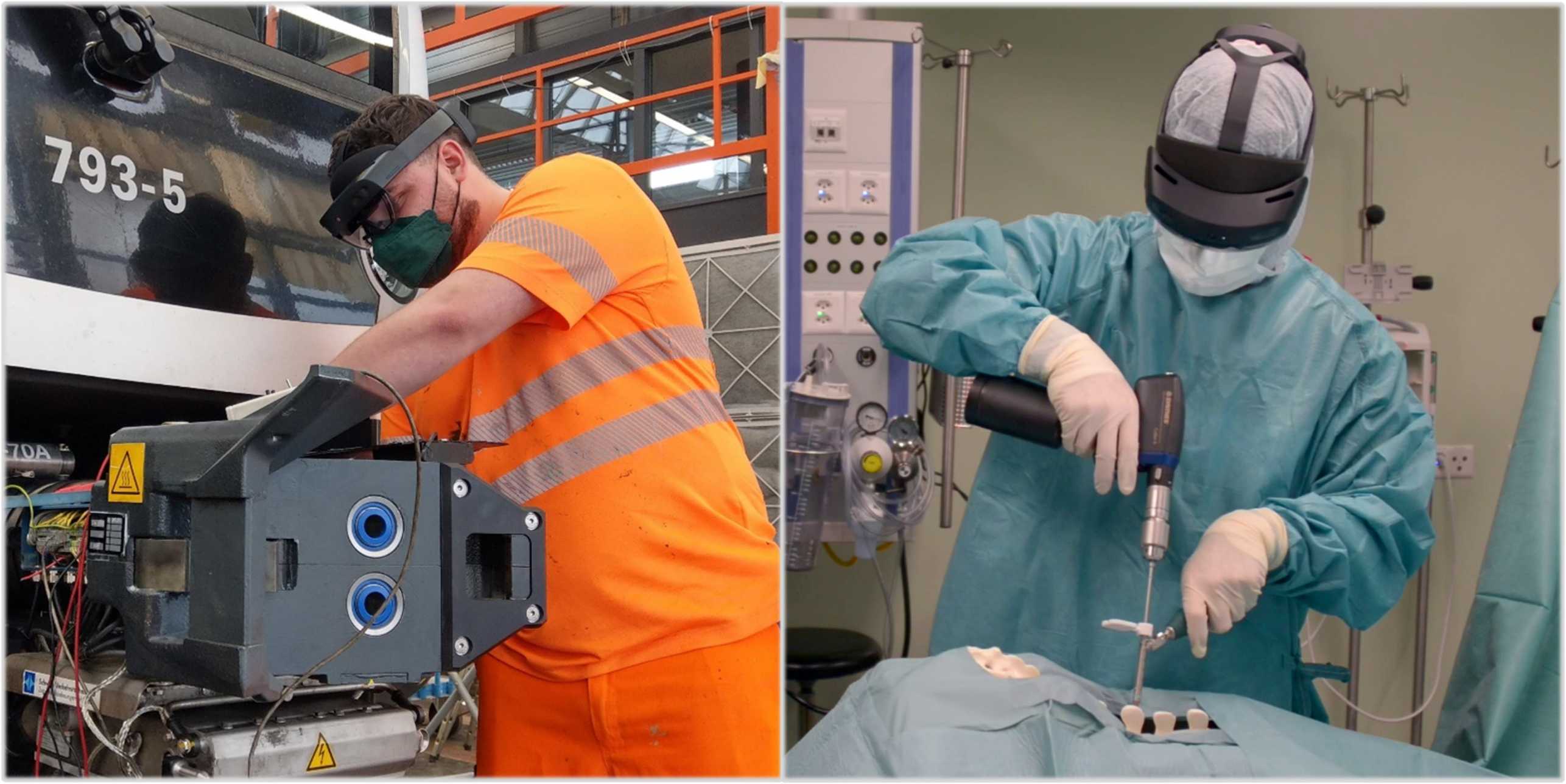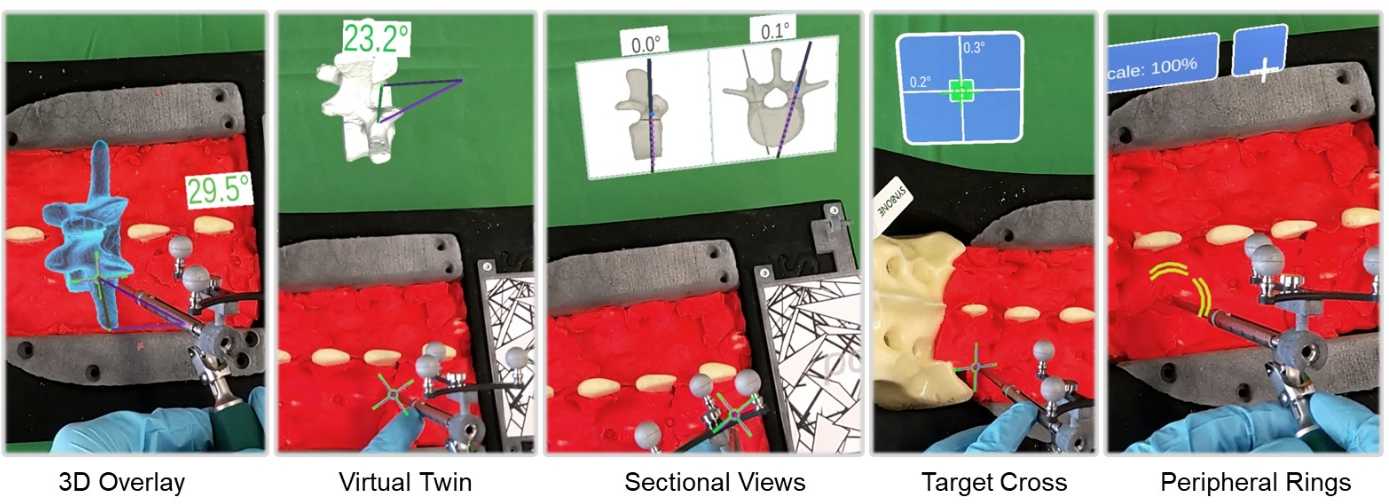Augmented Reality
Augmented Reality (AR) is a technology to display information in form of holograms directly into a person's field of view. We develop and test novel AR apps for context-aware support and real-time user feedback.
Context-aware Support
Procedural tasks are common in many professions and require precise execution. Augmented reality (AR) has shown promise in effectively assisting operators with such tasks. However, most AR systems only provide static information to the operator without considering their current situation or level of experience. We develop context-aware AR support to improve support especially for complex operations. By comparing user behavior inferred by real-time analysis of sensor data (e.g. eye tracking) with a process model, the current context and required support can be inferred to adapt displayed information and to provide real-time feedback.

Visualization Strategies
Using accurate and easy-to-use visualizations for surgical navigation is important to assist surgeons effectively during a procedure. As part of the Hochschulmedizin Zürich (HMZ) Flagship Project SURGENT, we compared 5 different augmented reality (AR) visualizations for surgical drilling with variations in abstraction level (abstract or anatomic), position (overlay or small offset), and dimensionality (2D or 3D). We tested these visualizations in a study with 4 expert surgeons and 10 novices (residents in orthopedic surgery) on lumbar spine models covered by Plasticine.

Hand Action Prediction
Human error in industrial and clinical applications can be associated with high risk and cost. For a simplified use case, we developed an AR app that can predict erroneous hand actions before they are executed in a simplified use case. By utilizing the eye and hand tracking capabilities of the Microsoft HoloLens 2, our solution is able to anticipate what a user will do next and, in case of a mistake, warn the user in advance.

Contact
Chair of Product Dev.& Eng. Design
Technoparkstrasse 1
8005
Zürich
Switzerland